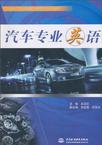汽车专业英语
出版时间:2010-7 出版社:水利水电出版社 作者:吴芷红 页数:352
Tag标签:无
前言
随着我国汽车工业和汽车服务业的迅速发展,使得汽车厂商与服务商对高素质的汽车从业人员的需求变得更为迫切。这种背景下,为了提高从业人员的专业素养,增加他们对国外先进技术的认知和吸收能力,有必要组织一套便于学习、反映国外先进技术的专业英语教材,以期能够在课时不多的情况下,快速提高学生的专业英语素养,达到能够消化与吸收英文专业文献的目的。 本书结合汽车专业英语的教学经验,注重培养学生的综合能力;内容主要选自国内外知名教材、权威网站,力求反映当今主要汽车的新结构、新技术;注重信息的筛选,深度适宜,篇幅符合大多数高等院校的教学要求;由浅入深,循序渐进,符合认知规律,便于学习;条理清晰,文字规范,语言流畅,图文结合,便于理解。本书主要特点如下: 1.专业方向明确,针对性强。面向汽车类相关专业,考虑汽车类相关专业的培养目标,注重汽车技术阐述的同时,将汽车维护、营销、保险等汽车售后市场的服务性专业文献纳入教材,符合汽车类专业学生就业知识结构拓展的要求,使毕业生不再局限于仅仅了解一些专业术语,而是能够从容面对工作中的专业英语所需,不再恐惧外语专业文献。国内高校汽车类专业英语课程的课时安排从24学时到50学时不等,各高校可根据实际情况酌情选用。 2.内容安排合理,便于教师和学生选择学习与阅读。教材前部分内容重点讲述汽车构造与理论,以及当今先进汽车技术的阐述;后部分内容重点讲述汽车维护,汽车营销,汽车保险以及汽车评估等内容,基本涵盖汽车类专业毕业生的大多数就业方向,便于针对学生的专业方向进行选用。 3.内容新颖,译注准确。教材内容选自国内外知名教材,权威网站的最新英文科技资料,既有汽车专业的基本概念、结构和技术,又有一些汽车专业领域的最新成果,具有一定的技术领先性。提供的参考译文和注释全部经专业老师审阅修改,翻译准确,专业术语规范。课文的参考译文请从中国水利水电出版社网站下载使用,并欢迎使用者与我们联系,进行交流,以便共同提高教学质量。 4.每篇课文提供相关的专业背景资料,便于课文内容的理解。每课之后提供一篇与课文内容相关的专业文献,作为泛读内容以供选择,增大了信息量的涵盖性,弥补了以往此类教材信息量较少的不足。
内容概要
本书参考了国内外知名教材和权威网站的专业文献,在注重介绍当今主要汽车新结构、新技术的同时,加强了汽车服务类专业人员所需汽车服务信息的内容,满足了汽车类专业学生综合性专业知识结构的要求。本书每篇课文提供相关的专业背景资料,便于课文内容的理解。对于课文中一些重点内容,给出了相关的参考译文,对于重点词汇也有释义。同时在每篇课之后,本书还提供一篇与课文内容相关的专业文献,作为泛读内容。因此本书涵盖的信息量大大增加,弥补了以往此类教材信息量较少的不足。 本书可供普通高校汽车工程类专业教学使用,也可作为国内汽车工程类专业就业群体学习提高和汽车工程行业职工培训教材或教学参考读物使用。
书籍目录
前言Lesson 1 History of the Automobile New Words & Terms Notes Questions Reading Materials The Development of AutomobileLesson 2 Structure of Automobiles New Words & Terms Notes Questions Reading Materials Car ClassificationLesson 3 Engine Construetions New Words & Terms Notes Questions Reading Materials Internal Combustion Engine ClassificationLesson 4 Fuel System New Words & Terms Notes Questions Reading Materials How Direct Injection Engines WorkLesson 5 Cooling System New Words & Terms Notes Questions Reading Materials RadiatorsLesson 6 Lubrication System New Words & Terms Notes Questions Reading Materials Fluid BearingLesson 7 Charging System New Words & Terms Notes Questions Reading Materials Lead-acid BatteriesLesson 8 Ignition System New Words & Terms Notes Questions Reading Materials Ignition SystemLesson 9 Starting System New Words & Terms Notes Questions Reading Material Starter MotorLesson 10 The Drive Line New Words & Terms Notes Questions Reading Materials Four-wheel DriveLesson 11 Manual Transmission New Words & Terms Notes Questions Reading Materials Semi-automatic TransmissionLesson 12 Automatic Transmissions New Words & Terms Notes Questions Reading Materials CVTLesson 13 Braking System New Words & Terms Notes Questions Reading Materials Anti-lock braking system"Lesson 14 Suspension System New Words & Terms Notes Questions Reading Materials Important Properties of SuspensionLesson 15 Steering System New Words & Terms Notes Questions Reading Materials Power SteeringLesson 16 Monocoque Construction Body New Words & Terms Notes Questions Reading Materials Automotive DesignLesson 17 Lighting System New Words & Terms Notes Questions Reading Materials History of Modern Lighting and Lighting System MaintenanceLesson 18 Air Conditioning Systems New Words & Terms Notes Questions Reading Materials Choosing and Using Alternative Refrigerants for Motor Vehicle Air ConditioningLesson 19 The Brief History of Electric Vehicle Technology New Words & Terms Notes Questions Reading Materials Electric CarLesson 20 The Electric Hybrid Vehicle New Words & Terms Notes Questions Reading Materials Hybrid Vehicle Drivetrain-"Lesson 21 Automobile System Diagnosis New Words & Terms Notes Questions Reading Materials Auto MechanicLesson 22 Automobile Maintenance New Words & Terms Notes Questions Reading Materials Automotive Technician Training, Other Qualifications, and AdvancementLesson 23 Vehicle and Engine Analyzers New Words & Terms Notes Questions Reading Materials On-board DiagnosticsLesson 24 Safety and Performance Testers New Words & Terms Notes Questions Reading Materials Automobile SafetyLesson 25 The 5W's of World Class Customer Service Training New Words & Terms Notes Questions Reading Materials Customer Relationship ManagementLesson 26 Selling a Car Online New Words & Terms Notes Questions Reading Materials Car Dealerships in North AmericaLesson 27 Automobile Marketing Skills New Words & Terms Notes Questions Reading Materials Integrated MarketingLesson 28 Vehicle Insurance New Words & Terms Notes Questions Reading Materials Auto Insurance in the United StatesLesson 29 New Car Assessment Program New Words & Terms Questions Reading Materials Australian New Car Assessment Program (ANCAP)Lesson 30 Estimating for Automobile Repair-. New Words & Terms Notes Questions Reading Materials Vehicle RecoveryVocabulary参考文献
章节摘录
German engineer Karl Benz, inventor of numerous car-related technologies, is generally regarded as the inventor of the modern automobile. The four-stroke petrol (gasoline) internal combustion engine that constitutes the most prevalent form of modern automotive propulsion is a creation of German inventor Nikolaus Otto. Early attempts at making and using internal combustion engines were hampered by the lack of suitable fuels, particularly liquids, and the earliest engines used gas mixtures. A later version was propelled by coal gas. Karl Benz built his first automobile in 1885 in Mannheim. Benz was granted a patent for his automobile on 29 January 1886, and began the first production of automobiles in 1888. Soon after, Gottlieb Daimler and Wilhelm May bach in Stuttgart in 1889 designed a vehicle from scratch to be an automobile, rather than a horse-drawn carriage fitted with an engine. 1 Veteran Car Era By 1900, mass production of automobiles had begun in France and the United States. By the start of the 20th century, the automobile industry was beginning to take off in western Europe, especially in France, they produced 30,204 in 1903, representing 48.8% of world automobile production that year. Innovation was rapid and rampant, with no clear standards for basic vehicle architectures, body styles, construction materials, or controls[3]. Automobiles were seen as more of a novelty than a genuinely useful device. Breakdowns were frequent, fuel was difficult to obtain, roads suitable for travelling were scarce, and rapid innovation meant that a year-old car was nearly worthless.
编辑推荐
教材内容新颖、安排合理、针对性强,便于学习与阅读,提供参考译文和注释,经专业老师审阅、修改,翻译准确、专业术语规范,蕴含汽车专业领域的最新成果,具有一定的技术领先性。适合汽车技术与汽车维护、营销、保险等汽车类专业学生和从业人员使用。
图书封面
图书标签Tags
无
评论、评分、阅读与下载
用户评论 (总计2条)
- 汽车专业英语
- 商品本身和内容均不好
推荐图书
- 杨艺交谊舞入门北京平四(VCD)
- 杨艺交谊舞入门蝴蝶布鲁斯(VCD)
- 杨艺交谊舞入门探戈(VCD)
- 摩登王子(VCD)
- 动感街舞芝加哥炫技(VCD)
- 学跳肚皮舞纤腰篇(VCD)
- 温可馨减肥美体肚皮舞(VCD)
- 纤体肚皮舞(VCD)
- 塑身瑜伽(VCD)
- 美体瑜伽(VCD)
- 办公室瑜伽(VCD)
- 经络美人瑜伽(VCD)
- 清心瑜伽(VCD)
- 心灵瑜伽(VCD)
- 欧美街舞纽约传奇(VCD)
- 爵士街舞巴黎火舞(VCD)
- 日韩街舞首尔之春(VCD)
- 优生胎教(VCD)
- 斗牛拉丁舞(VCD)
- 少儿拉丁舞(DVD)
- 韩式嘻哈青春街舞(DVD)
- 百年经典童话(3DVD)
- 数学实用宝典(3DVD)
- 故事大王(3DVD)
- 唐诗300首(3DVD)
相关图书
- 18小时熟记新概念英语1152词汇
- 普通高中课程标准实验教科书配套用书
- 综合日语第3册
- 一口气读懂管理学
- 计算机应用基础习题汇编和过级指导
- 大学生就业指导新编
- 你的谈吐错在哪里
- 中学英语考点难点详解手册
- 启迪孩子智慧的寓言故事
- 韶华不为少年留
- 民国京昆史料丛书(第8辑)
- 培养孩子乐观豁达的名人幽默故事
- 金秋梨优质丰收技术
- 液压传动
- 液压与气压传动
- 金属工艺实训指导
- 儿歌童谣打电话(4VCD) [套装]
- 张敬轩:拉阔变奏厅(CD) [套装]
- 儿歌童谣数鸭子(4VCD) [套装]
- 罗素•沃森:旷世美声(DVD)
- 杨艺交谊舞入门湖南快四(VCD)
- 杨艺交谊舞入门北京恰恰恰(VCD)
- 杨艺交谊舞入门随心吉特帕(VCD)
- 杨艺交谊舞入门伦巴(VCD)
- 杨艺交谊舞入门华尔兹(VCD)
